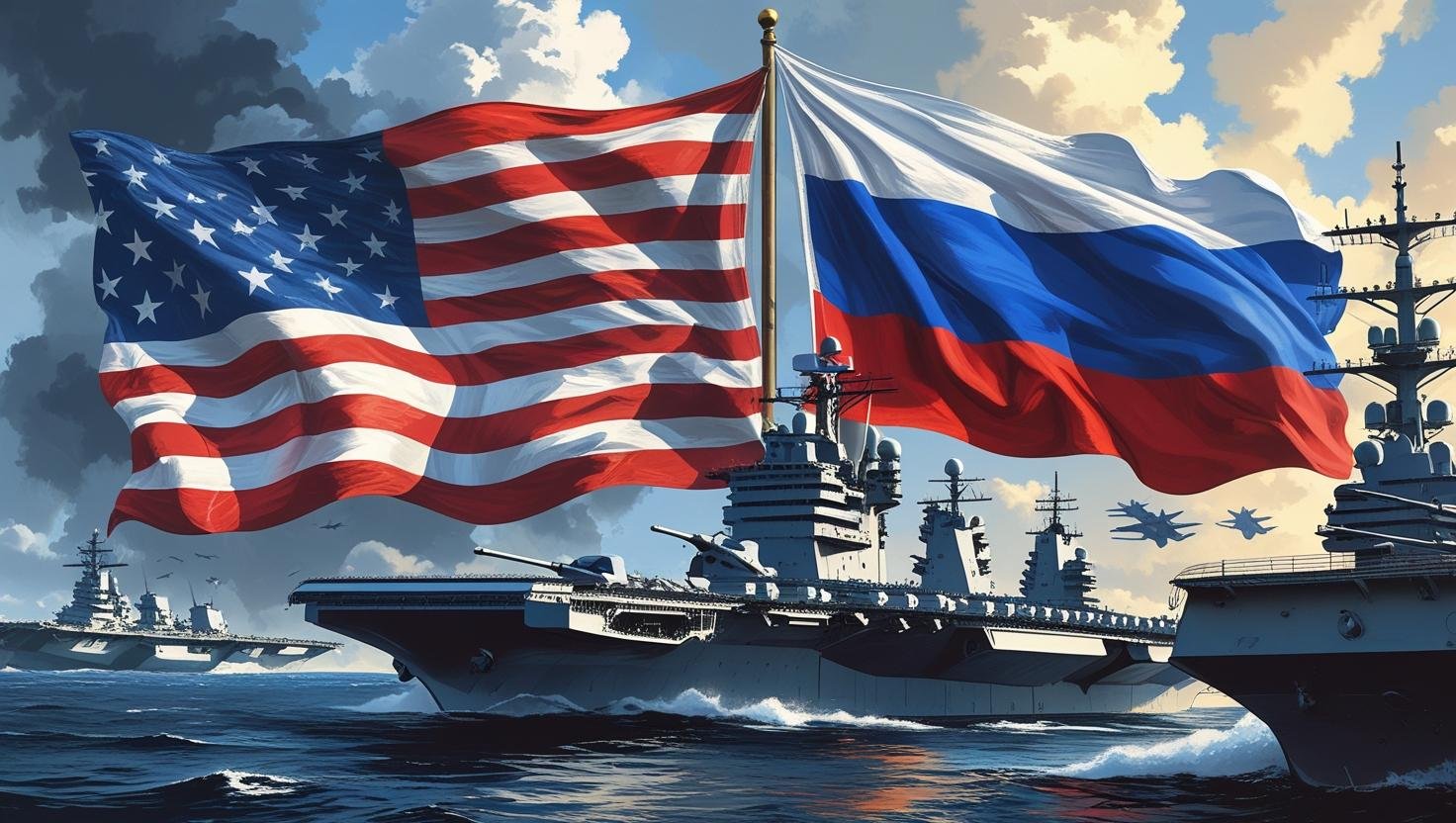On August 1, 2025, former U.S. President Donald Trump announced a controversial and high‑stakes decision: Trump Order Nuclear Submarines Deployment into new positions. Triggered by sharp remarks from former Russian President Dmitry Medvedev, this move has quickly become a focal point in the ongoing Trump Russia tensions. The Trump nuclear submarines deployment is not just about military readiness, but a clear message in the global power struggle.
Announcement and Context
On August 1, 2025, a shiver of anxiety swept over the global arena as the U.S. President Donald Trump announced a shocking and audacious step – the relocation of two American nuclear submarines. The announcement was vague at best, but the message was unmistakable: provocative, contemptuous, and highly geopolitical.
Trump said in a post to his Truth Social platform: “In response to the very aggressive wording of the former President of Russia, Dmitry Medvedev. I have placed a Nuclear Submarine there and there.” Words are important, because they can have unintended consequences too, he said. Let us hope that this will not be one of those cases.
This move places Trump – USS deep‑diving anes into bold relief as U.S.-Russia tensions resurface. The action is both a symbolic affront and a tactical measure: designed to emphasize U.S. naval presence during a potentially volatile diplomatic impasse.
Why Did Trump Order Submarines?
Dmitry Medvedev, former Russian president turned deputy chairman of Russia’s Security Council, had recently made a series of verbal threats to the U.S., triggering Trump’s order. Medvedev, for warning the U.S. ultimatums that risked sanctions were “a step towards war,” described Trump and a shortened ceasefire period in Ukraine as just as irresponsible. His remarks invoked the Cold War‑era nuclear strike capabilities of Russia, including the well‑known “Dead Hand” system.
In response to what he perceived as public provocation, Trump shot back, calling Medvedev’s statements “highly provocative,” and through his platform Truth Social threatened action to defend the United States. He said that trolleying some nuclear subs was a reasonable response to the ramping up of rhetoric. “I think what a former president of Russia did was make a threat, and we are keeping our people safe,” he told reporters later. So the deployment of Trump nuclear submarines is actually a precautionary measure which also aims to intimidate and show that diplomacy is getting hotter at the expense of the readiness of the United States military.
Where Will Subs Be Stationed?
Nothing specific is known. The president did not specifically name bodies of water or bases, saying only that the U.S. would be poised in “appropriate places.” The U.S. Navy and Pentagon both refused to comment on the deployment or particular locations of resources, though claiming those activities are still top‑secret.
- The U.S. currently operates numerous Ohio‑class nuclear‑powered submarines around the world.
- These vessels are capable of firing ballistic missiles at Russia if needed.
- Experts say they are already strategically positioned and do not necessarily need to be moved.
The imprecision regarding location does, however, lend itself to maximum strategic ambiguity. Subs are a deterrent in the North Atlantic, Arctic waters, or North Pacific. However, without assurance, it’s more rhetorical than anything: a posture, rather than an actual military change.
What Does Russia Say Next?
So far, Moscow has taken it in stride. Kremlin spokesman Dmitry Peskov said in a statement that it “took note” of Trump’s announcement but did not provide any indication benediction or otherwise on whether Moscow would abide by U.S. requests.
Russian President Vladimir Putin did not specifically address the submarine move. Speaking during a visit to a monastery in Karelia, he called for peace talks to be held “without cameras” and political theatre, and warned that over‑ambition leads to disenchantment.
At the same time, high‑ranking Russians have tried to allay fears. Viktor Vodolatsky, deputy chairman of the State Duma’s CIS affairs committee, sought to play down the significance of the new weapons claims, saying that Russia had “orders of magnitude more nuclear submarines in the oceans of the world” than the U.S. and that no reaction was required.
Hence the official Russian tone is measured: steady, but not reactive, confident in its own deterrent and letting the waters of U.S. rhetoric rise and fall.
Escalation or Signaling?
Security specialists said the decision to move submarines is an escalation in rhetoric but not necessarily in military positioning. The U.S. has also kept subs on patrol that could strike targets in Russia at virtually all times. So it is seen as political signaling rather than a capability change.
Daryl Kimball, executive director of the Arms Control Association, called Trump’s public declaration “irresponible and inadvisable,” writing that nuclear war should never be threatened so cavalierly or through social media.
Others warn of a commitment trap where public rhetoric leads to the escalation of expectations, if not action. Trump’s gesture, Kristensen noted, gives Medvedev “an opening to claim that the U.S. is engaging in nuclear moonshine, increasing global tension without really altering the strategic balance.”
But for Evelyn Farkas, from the McCain Institute, the move was mainly a sign through a means of signalling sign design, meant to raise pressure but not induce nuclear war.
Political and Emotional Impact
Psychologically, it exacerbates fears of Cold War‑era brinksmanship. The wording “foolish and incendiary remarks,” “grossly provocative” expresses annoyance, ultimately defiance, and to some extent defenselessness.
On the home front, Trump positions himself as a bulwark between Americans: cautious, opportunistic, and ready to flex. The gesture will have international repercussions, stirring memories of nuclear posturing and causing worry from allies and adversaries alike.
This also has political implications, signaling a tougher American approach to Russia in negotiations. Trump has made August 8 the deadline for a ceasefire, or sanctions will follow. His starkly escalated rhetoric and naval positioning reflect how seriously he takes Russia’s compliance.
Next Steps
- Silence or confirmation from U.S. military: If the Defense Department acknowledges movement, the posture shifts from symbolic to operational. Silence suggests deliberate ambiguity remains.
- Russian retaliation: If Medvedev or Putin escalates rhetorically or militarily, tensions could rise further. A muted response implies continued restraint.
- Diplomatic lever‑pull: The Secretary of State or National Security Council could use back‑channel diplomacy to push Moscow back into ceasefire talks.
- Media and Congress response: Lawmakers may hold hearings to determine if Trump’s move raises risks or strengthens deterrence.
- International response: NATO allies may seek reassurance or caution against reckless brinkmanship.
Wider Context: Trump Russia Tensions and U.S. Navy Posture
The larger theme covers Trump Russia tensions and defense escalation nuclear policy during his second term as president. Contrary to earlier U.S. administrations, Trump has leaned heavily on public threats and displays of naval power as bargaining tools.
A campaign promise to end the war in Ukraine in 24 hours has given way to frustration over stalled diplomacy. Washington issued Moscow deadlines a 50‑day window initially, then a shorter 10‑ or 12‑day ultimatum for ceasefire accompanied by warnings of severe sanctions.
Trump has hardened his rhetoric, calling Putin a “bullshit” and Russia’s attacks on Ukraine “disgusting.” The submarine move signals a shift toward deterrence as the currency of negotiation.
Critics argue that programs like AUKUS, which will supply submarines to allies, could reduce U.S. readiness in a direct conflict with Russia.
Conclusion On Trump Order Nuclear Submarines Deployment
The Trump nuclear submarines deployment stands as a calculated signal in the current geopolitical struggle. While it may not alter the U.S. military’s capabilities, it intensifies Trump Russia tensions and shows a willingness to use US navy posture as a tool of defense escalation nuclear policy. The days ahead will reveal whether this results in diplomacy or deepens division.
FAQs
Why did Trump order submarines?
He acted after remarks from Dmitry Medvedev that he viewed as highly provocative, aiming to deter potential threats and stress U.S. readiness.
Where will subs be stationed?
Locations are undisclosed. Trump described them as “appropriate regions,” and U.S. officials declined to elaborate for security reasons.
What does Russia say next?
Russia acknowledged the move but played down its importance, citing its own significant nuclear submarine presence.
Reference
Trump orders nuclear submarines moved after Russian ‘provocative statements’

